Published Feb 11, 2013
DS9's "Far Beyond The Stars" - 15 Years Later
DS9's "Far Beyond The Stars" - 15 Years Later
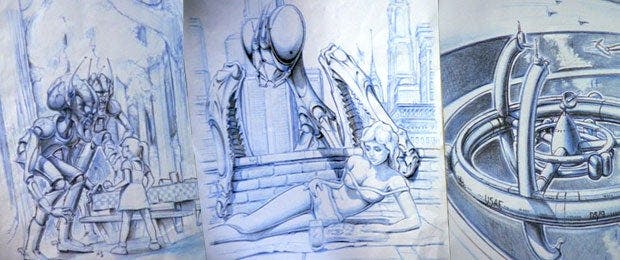
When Michael Piller broke Hollywood tradition by allowing the general public to pitch story ideas to Star Trek: The Next Generation, he had no way of knowing that nearly a decade later the practice would result in the creation of a television masterpiece. Piller joined the TNG executive staff in 1989, just as the show was entering its third season. He quickly discovered a problem—there were no scripts ready to be shot. So he made two bold moves. He instituted an “open script policy” that encouraged freelance writers to submit their ideas. And he hired Ira Steven Behr to run his writer’s room. As the years rolled by, the open script policy remained a staple of Star Trek’s fan-friendly production. Behr drifted away for a time, but returned in 1992 when Piller tapped him to work on a new show, Star Trek: Deep Space Nine.
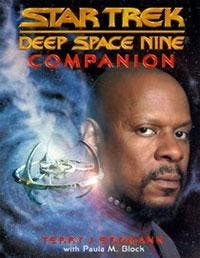
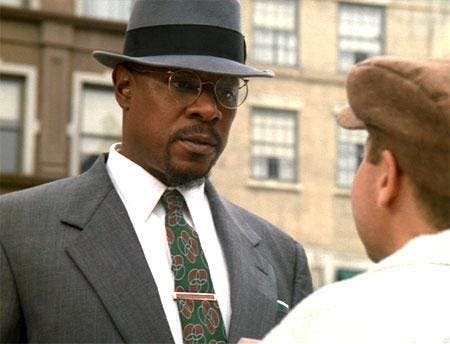
What is reality and what isn’t. That speculation became the creative drive behind a time-travel story that doesn’t involve time-travel. From the start, viewers realized that all is not as it seems. Protagonist Benny doesn’t walk into a realistic Brill Building (a New York landmark made home to the episode’s fictional Stone Publishing), but into the “Trill Building,” a not-so-subtle renaming that could only come from Ben Sisko’s subconscious. As DS9’s viewing audience recognized the people Benny encounters, they were surprised that none of them sported unusual foreheads. There were no shapeshifters, no spoonheads, no big-lobed devotees of oo-mox in any and all places. The setting was Earth’s 1950s, populated by normal looking people who resembled the headshots that a small group of actors had submitted five seasons before, when auditioning for the roles they hoped to play on that new Star Trek show.Now those actors had shifted gears and climbed into the skins of a new set of characters. It was a short vacation from the portrayals they lived in every week.“Herb Rossoff,” Armin Shimerman says, “was not an extension of Quark. He was a Communist—which is about as far from a Ferengi as you can get.”
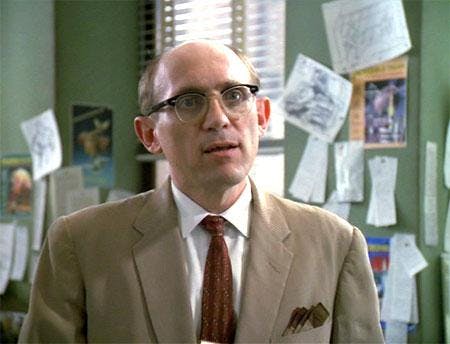
“Douglas Pabst was an unenlightened white man,” notes Rene Auberjonois. “Ira was very concerned about how I would react to being, essentially, a bad guy. But I loved the part.”J.G. Hertzler, usually buried in Klingon crags, had never appeared sans prosthetics on DS9. But, he says, “Playing the role of staff artist Roy Rittenhouse was like falling off a log for me. I really do draw and paint. So when I was sitting there drawing, I literally was drawing the cast.”“It was very strange,” adds Jeffrey Combs who normally appeared on the show in Ferengi or Vorta guise. “Everybody was out of makeup, and we were standing on a back-lot New York street. It was just a totally different world.”
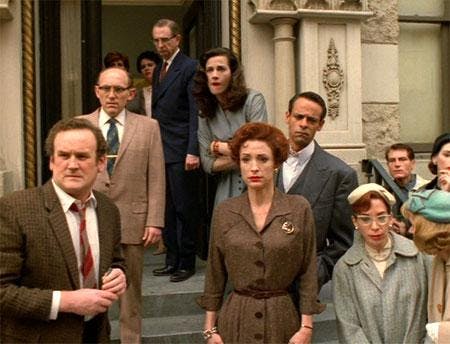
While actors who are airing their actual faces find a realistic New York street to be stranger than when eyeing Cardassian architecture from under rubber prosthetics, that phrase, “what is reality and what isn’t,” comes into full fruition.Ultimately, “Far Beyond the Stars” isn’t about back-lots, or makeup, or even a visit to the l950s. It is, as Ira Behr realized from the beginning, a story about Benjamin Sisko, and racism. And that, using Behr’s term, is a “bottom.” One that comes straight out of Gene Roddenberry’s original concept for Star Trek, that in the future no one would be concerned with the color of one’s skin, or the shape of one’s ears.“What’s insidious about racism is that it is unconscious,” explains Avery Brooks, who directed the episode while simultaneously playing Benny (and Ben). “It’s in the culture. It’s the way people think. So that was the approach we took. I never talked about racism. I just showed how these intelligent people think, and it all came out of them.”Racial prejudice isn’t the only injustice covered in the episode. Those intelligent people, Brooks notes, “include a woman writer who has to use a man’s name to get her work published.” It’s easy to think of the intolerant cops played by Marc Alaimo and Jeffrey Combs as the “bad guys;” yet it’s the less overt prejudice of Auberjonois’ character, Pabst, who refuses to stand up to the magazine’s publisher, that pushes Benny over the edge. And unfortunately, prejudice, in its many forms, hasn’t gone away. “If we had changed the people’s clothes,” Brooks states, “this story could be about right now.”
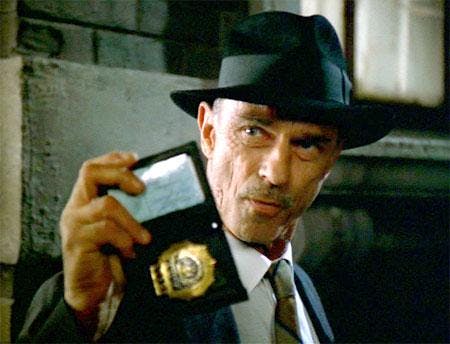
Which is one more thing that consistently keeps the episode among fans’ Top Ten favorite Deep Space Nine episodes. “‘Far Beyond the Stars’ presented a page of our history, from a time when science fiction was becoming a part of the mainstream,” observes Avery Brooks. “And when we talk about those writers from the 1950s,” he adds, gesturing toward the Deep Space Nine stage sets, “we’re talking about the reason that we’re even here!”And why you’re reading this, right now.
Check out the preview for "Far Beyond the Stars" HERE._______________
Terry J. Erdmann and Paula M. Block confess to having lifted parts of this story from their book The Star Trek: Deep Space Nine Companion. Their most recent books are the full color tomes, Star Trek The Original Series 365 and Star Trek The Next Generation 365. They’ve just completed a book covering a fun and surprising moment in Star Trek history -- but they can’t talk about it until September. Stay tuned! Please. And, they add, be sure to re-watch “Far Beyond the Stars.” Again.

